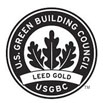
Marea is a development consisting of 60 units arranged into four terraced rows, located on a site that was previously a Syrian army camp. It’s located outside the ancient city of Batroun, 50 kilometers up the Lebanese coast from Beirut. Photo by Bruce Damonte.
Amale Andraos, Hon. FRAIC, and Dan Wood, FAIA, are co-founders and principals of WORKac, based in New York City. The firm was the recipient of the 2023 Arts and Letters Award in Architecture, has been named the number one design firm in the United States by Architect Magazine and was selected as the AIA New York State Firm of the Year in 2015.
Andraos and Wood will present a lecture at 4:30 p.m. Monday, April 15, in Ken and Linda Sue Shollmier Hall, Room 250 of Vol Walker Hall, on the University of Arkansas campus, as part of the spring lecture series in the Fay Jones School of Architecture and Design.
In their lecture, “Buildings for People and Plants,” they will present their practice’s recent work, focusing on a series of projects that re-examine architecture’s capacities to actively reshape social and environmental concerns. The lecture will build on the practice’s focus on public work across scales and contexts to its focus on innovative approaches to preservation, sustainable systems and greater integration of architecture and landscape at the scale of buildings.
WORKac has achieved international acclaim for projects such as the Edible Schoolyards in Brooklyn and Harlem, a public library for Kew Gardens Hills, the Miami Museum Garage, the Student Success Center at the Rhode Island School of Design, a new branch for the Brooklyn Public Library in New York City and two community centers in Mexico City, Mexico, in collaboration with Ignacio Urquiza Architects.
Andraos and Wood believe in the power of architecture and design to engage environmental and social concerns to create new possibilities for the future. The work of WORKac throughout the United States and around the world emphasizes a deep engagement with local cultures, climates and histories. Their focus is on public, cultural and institutional projects that reinvent how people live, work, learn and experience the world together.
Current projects include the Beirut Museum of Art at Saint Joseph University, the Sibley Dome Renovation at Cornell University, a public library for Boulder, Colorado, a strategic masterplan and a series of renovations for Vassar College, and multiple renovations at Packer Collegiate Institute in Brooklyn, New York.
WORKac has been exhibited widely, including at the Venice Architecture Biennale, the Chicago Architecture Biennale, the Lisbon Architecture Triennale, the Shenzhen-Hong Kong Biennale, MoMa, the Victoria and Albert Museum, The Canadian Center for Architecture, the Design Museum, London, the Royal Academy of Arts, the Museum Brugge, and the Sharp Family Gallery at the Olana State Historic Site.
Andraos and Wood are committed educators. Andraos is professor and dean emeritus of the Columbia University’s Graduate School of Architecture Planning and Preservation (GSAPP), and the first woman to have become dean of the school. During her tenure as dean, Andraos also served as architecture advisor to the president and special advisor for the Climate School. Wood has taught extensively, most recently as an adjunct associate at Yale School of Architecture. He held the 2013-14 Louis I. Kahn Chair at the Yale School of Architecture and has taught at the Princeton University School of Architecture, the Irwin S. Chanin School of Architecture at the Cooper Union, Ohio State University’s Knowlton School of Architecture and the University of California Berkeley School of Environmental Design, where he was the Friedman Distinguished Chair.
Their publications include, We’ll Get There When We Cross That Bridge (Monacelli Press, 2017); 49 Cities (Inventory Press, 2016); and Above the Pavement—the Farm: Architectural & Agriculture at P.F.1 (Princeton Architectural Press, 2010).
This is the Ernie Jacks Lecture, sponsored by Marlon Blackwell Architects.
The school is pursuing continuing education credits for this lecture through the American Institute of Architects.
This lecture is free and open to the public. Seating is limited.



